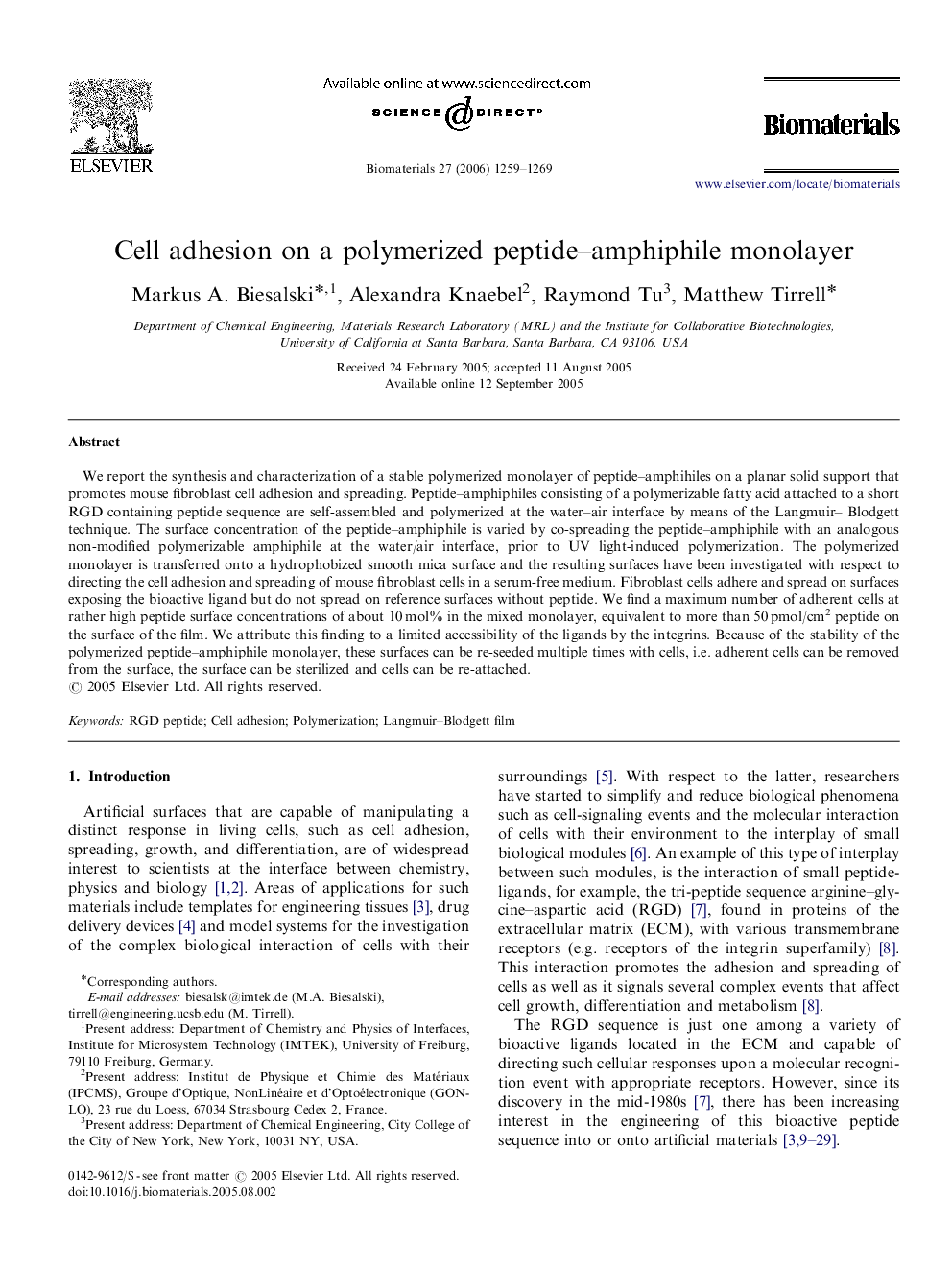| کد مقاله | کد نشریه | سال انتشار | مقاله انگلیسی | نسخه تمام متن |
|---|---|---|---|---|
| 11534 | 747 | 2006 | 11 صفحه PDF | دانلود رایگان |

We report the synthesis and characterization of a stable polymerized monolayer of peptide–amphihiles on a planar solid support that promotes mouse fibroblast cell adhesion and spreading. Peptide–amphiphiles consisting of a polymerizable fatty acid attached to a short RGD containing peptide sequence are self-assembled and polymerized at the water–air interface by means of the Langmuir– Blodgett technique. The surface concentration of the peptide–amphiphile is varied by co-spreading the peptide–amphiphile with an analogous non-modified polymerizable amphiphile at the water/air interface, prior to UV light-induced polymerization. The polymerized monolayer is transferred onto a hydrophobized smooth mica surface and the resulting surfaces have been investigated with respect to directing the cell adhesion and spreading of mouse fibroblast cells in a serum-free medium. Fibroblast cells adhere and spread on surfaces exposing the bioactive ligand but do not spread on reference surfaces without peptide. We find a maximum number of adherent cells at rather high peptide surface concentrations of about 10 mol% in the mixed monolayer, equivalent to more than 50 pmol/cm2 peptide on the surface of the film. We attribute this finding to a limited accessibility of the ligands by the integrins. Because of the stability of the polymerized peptide–amphiphile monolayer, these surfaces can be re-seeded multiple times with cells, i.e. adherent cells can be removed from the surface, the surface can be sterilized and cells can be re-attached.
Journal: Biomaterials - Volume 27, Issue 8, March 2006, Pages 1259–1269